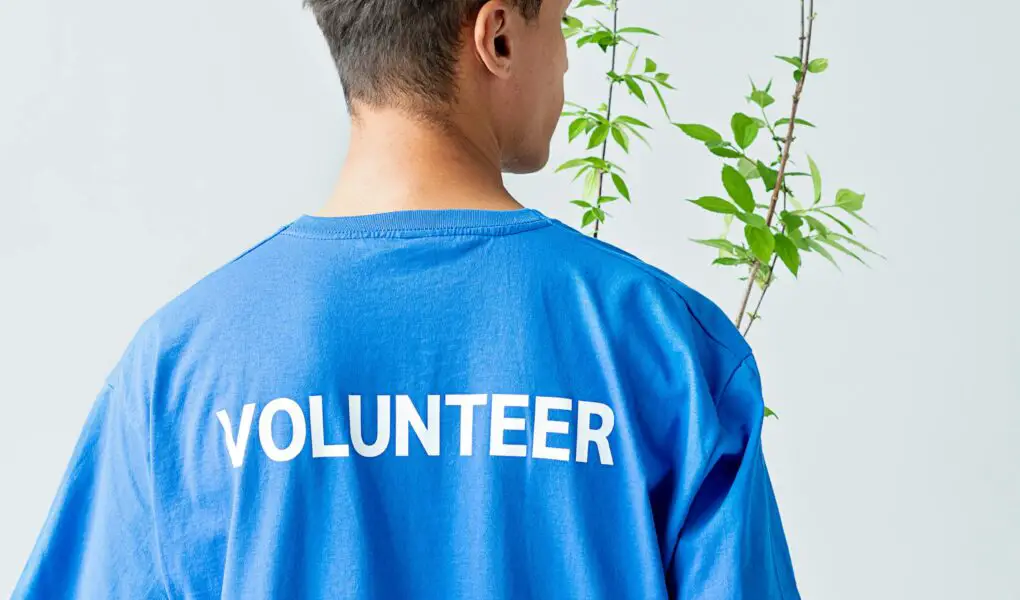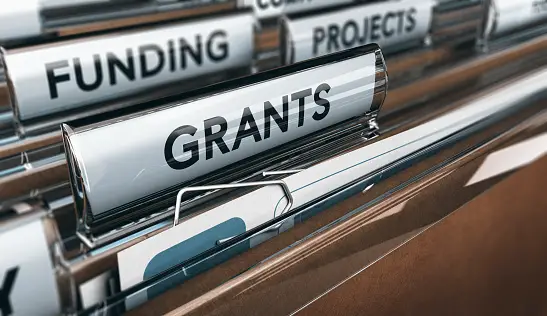Conservation grants for nonprofits are a vital source of funding for organizations dedicated to preserving the environment, protecting wildlife, and restoring ecosystems.
These grants support the work of nonprofits focused on sustainability, conservation, and environmental justice, and they can be the lifeline that helps fuel impactful projects aimed at combating climate change, protecting biodiversity, and ensuring a cleaner, greener planet for future generations.
If you’re a nonprofit looking to launch a conservation project or further your environmental work, finding the right grant opportunities and knowing how to apply for them can be the key to success.
But where do you begin? What types of conservation grants are available? And how do you increase your chances of securing funding? Let’s explore the different types of conservation grants for nonprofits, how to find them, and how you can successfully apply for funding to make your environmental projects a reality.
What Are Conservation Grants?
Conservation grants are financial awards provided by governments, private foundations, and corporations to support the efforts of nonprofits focused on conservation and environmental issues. These grants can cover a wide range of areas, including:
- Wildlife Protection: Grants aimed at safeguarding endangered species and their habitats.
- Environmental Education: Funds for programs that teach communities about sustainability, conservation practices, and environmental issues.
- Ecosystem Restoration: Support for projects focused on restoring damaged ecosystems, including reforestation, wetland restoration, and soil conservation.
- Climate Change Mitigation: Grants for initiatives that help reduce the impacts of climate change, such as carbon capture, renewable energy, and energy efficiency solutions.
- Sustainable Agriculture: Support for practices that promote sustainable farming methods, reduce waste, and protect the environment.
These conservation grants provide a crucial financial lifeline to organizations working on pressing environmental issues, enabling them to expand their impact and make a difference in the world. Because securing funding is often a competitive process, nonprofits must be strategic in crafting proposals and researching potential funders.
/>
Types of Conservation Grants for Nonprofits
Understanding the various types of conservation grants available can help you target the right opportunities for your organization. Here are the most common ones:
1. Government Grants
Government agencies at the federal, state, and local levels often offer grants to nonprofits working on conservation projects. They can provide significant support and have specific requirements and goals aligned with public policy.
- The National Fish and Wildlife Foundation (NFWF): As one of the most prominent funders of conservation programs in the U.S., NFWF offers several grant programs aimed at protecting wildlife, restoring habitats, and promoting environmental education. By visiting their official website, nonprofits can find current grant opportunities and guidance on how to apply.
- The U.S. Environmental Protection Agency (EPA): The EPA offers grants for environmental protection programs, including projects focused on water quality, air pollution, and land preservation. Check out EPA Grants for specific funding opportunities.
- State Environmental Grants: Many state-level environmental agencies offer grants for local conservation efforts, including programs for wildlife protection and ecosystem restoration. For example, California’s Environmental Protection Agency often provides grants tailored to regional issues, and similarly, other states have their own agencies offering dedicated funding.
These sources often require detailed proposals, adherence to strict guidelines, and demonstrate measurable impacts. However, they offer substantial funding amounts that can significantly boost your initiatives.
2. Private Foundations
Many private foundations focus on funding environmental conservation projects. They often have more flexible application processes and focus on niche areas of interest.
- The William and Flora Hewlett Foundation: This foundation provides grants for environmental conservation, particularly in the areas of global warming, energy efficiency, and sustainable agriculture. Their grant programs often support innovative approaches to conservation.
- The Packard Foundation: This foundation funds a variety of environmental initiatives, including ocean conservation, land conservation, and wildlife protection. Information about their grantmaking strategies can help nonprofits tailor their applications to meet specific criteria.
- The Doris Duke Charitable Foundation: A significant funder in the environmental sector, the Doris Duke Foundation provides grants for conservation programs, including efforts to protect wildlife and habitats. Visit their website for more details on funding opportunities and application guidelines.
Private foundations generally have specific missions and guidelines, so studying past successful applications and annual reports can provide insights into how best to structure your proposal for maximum impact.
3. Corporate Grants
Corporations play a significant role in funding environmental conservation initiatives through their Corporate Social Responsibility (CSR) programs. These grants often focus on sustainability and community engagement.
- The Coca-Cola Foundation: This foundation provides grants for programs that promote water conservation, watershed protection, and environmental sustainability. Check out their site for application details.
- The Walmart Foundation: Walmart offers grants for projects related to sustainability, including environmental conservation and waste reduction initiatives. They often have a focus on community impact, so local nonprofits may find opportunities that match their conservation goals. Their grant page provides guidelines and application deadlines.
Corporate grants sometimes include in-kind contributions, partnerships, or matching funds, which can further strengthen your project’s budget and sustainability.
4. Conservation Trusts
Conservation trusts are specifically designed to fund environmental conservation efforts. These trusts often focus on land preservation, habitat restoration, and the protection of natural resources.
- The Land Trust Alliance: This organization supports land trusts across the U.S. with grants and technical assistance, enabling them to acquire and protect significant parcels of land for conservation. Their resources page provides guidance on applying for funding and best practices for land conservation.
- The Conservation Fund: The Conservation Fund supports conservation initiatives through grants and loans to nonprofits and other organizations working to protect land and wildlife. Their website offers insights into how to apply for support and details on previous projects they have funded.
These trusts often prioritize projects that have long-term benefits for local communities and the environment, such as preserving wildlife corridors, restoring degraded habitats, and protecting water sources.
How to Find Conservation Grants for Nonprofits
Finding the right conservation grants for your nonprofit can be overwhelming, but there are several strategies to help narrow your search and increase your chances of success:
1. Use Grant Databases
Online grant databases are a fantastic way to search for conservation grants. Some popular databases include:
- GrantWatch: GrantWatch provides an up-to-date listing of available grants across various sectors, including environmental conservation. Their filters allow you to specify location, focus area, and funding amount to find suitable opportunities. Visit GrantWatch for more details.
- Instrumentl: Instrumentl allows you to search for conservation funding opportunities based on your nonprofit’s needs and goals. It integrates with your calendar and workflow to ensure you never miss an opportunity. You can learn more on Instrumentl’s website.
- Foundation Center (Candid): This database includes detailed information about foundations that offer grants for conservation projects. It’s a subscription-based service, but the depth of research available can be invaluable. Access information at Candid.
Using these databases not only helps you identify potential funders but also provides insights into each funder’s grant cycles, application processes, and success stories.
2. Research Specific Funders
Once you identify the types of conservation projects your nonprofit focuses on, research funders who specialize in those areas. Many grant-making organizations, like those listed earlier, focus on specific environmental issues. Understanding their funding priorities will help you apply to the right ones. For instance, if your project deals with coastal habitat restoration, organizations like The Packard Foundation that prioritize ocean conservation could be ideal candidates.
When researching funders, take time to:
- Study their mission statements and recent grant recipients.
- Read through their application guidelines carefully.
- Understand the scale of funding typically awarded.
- Note any funding deadlines and reporting requirements.
This tailored approach ensures that your proposal aligns closely with what the funder is looking for, increasing your chances of success.
3. Network with Other Nonprofits
Networking with other organizations working in the conservation space can help you discover new grant opportunities. Attend conferences, webinars, and meetings where funders and nonprofits gather to discuss environmental issues. Examples include the annual Society for Conservation Biology meeting or local environmental workshops hosted by conservation groups.
Joining nonprofit alliances or online forums such as LinkedIn groups and conservation communities can also provide valuable insights and personal recommendations on securing funding. Engaging with peers may lead to partnerships on grant proposals, collaborative projects, and sharing of resources that increase overall success rates.
How to Apply for Conservation Grants
Applying for conservation grants can be a competitive process, but with the right preparation, your nonprofit can increase its chances of success. Here’s a step-by-step guide on how to apply:
1. Understand the Funder’s Priorities
Before applying for any grant, make sure your project aligns with the funder’s priorities. Review their mission statement, the types of programs they typically fund, and any eligibility criteria. For instance, the Packard Foundation focuses on ocean conservation and land conservation, so if your nonprofit is working in these areas, this could be a great match.
Understanding their priorities means customizing your proposal to reflect their goals. If the funder emphasizes community engagement or science-based approaches, make sure your proposal highlights these elements. This shows funders that you have done your homework and are genuinely aligned with their mission.
2. Write a Strong Proposal
Your grant proposal should clearly outline your project’s goals, timeline, and expected outcomes. Use data and research to support your proposal, and include a detailed budget showing how you will use the grant funds. Here’s how to craft a compelling proposal:
- Introduction & Hook: Start with a powerful hook to capture the funder’s attention. Use a personal anecdote, startling statistic, or poignant story about why the project matters. For example, begin with a description of how habitat loss affects a particular endangered species and how your nonprofit plans to make a difference.
- Clear Goals: What do you want to achieve with the grant? Be specific about your objectives. Instead of saying “improve wildlife habitat,” say “restore 50 acres of wetlands to serve as a breeding ground for local bird species within two years.”
- Methods and Approach: How will you achieve these goals? Describe the strategies you will use to implement your project. This might include community engagement, scientific research, habitat restoration techniques, or educational outreach programs. Detail how these strategies will be executed, and why they are the best approach.
- Data and Research: Use data to support your proposal. Cite studies, include statistics about environmental impact, or show evidence of previous success. For example, “According to the World Wildlife Fund, wetland restoration can increase biodiversity by up to 30% within five years.”
- Impact and Sustainability: How will your project contribute to long-term conservation efforts? Include measurable outcomes or metrics, such as the number of trees planted, reduction in carbon emissions, or improved water quality. Explain how you will sustain the project after the grant funding ends, such as through community partnerships, future fundraising events, or volunteer programs.
- Detailed Budget: Provide a clear and realistic budget that outlines how every dollar of the grant will be spent. Break down costs for personnel, materials, travel, and overhead expenses. Demonstrating financial responsibility boosts funder confidence.
- Conclusion and Call to Action: End with a strong conclusion that summarizes the potential impact of your project and why it deserves funding. Invite funders to join your mission, and provide contact information for follow-up.
3. Submit All Required Documents
Make sure you submit all the necessary documentation as required by the grant guidelines. This may include:
- Financial statements and proof of 501(c)(3) status.
- A list of board members and key staff.
- Letters of support or testimonials from community partners.
- Historical data on past projects and their outcomes.
Double-check that all parts of your application are complete and formatted according to the funder’s requirements. Incomplete applications often result in immediate disqualification.
4. Follow Up
After submitting your application, be sure to follow up with the funder to confirm they’ve received it and ask if there’s anything else you need to provide. Polite follow-up emails or phone calls can demonstrate your enthusiasm and professionalism. Also, use this opportunity to ask for feedback if your application is not successful, as it can guide improvements for future submissions.
Tips for Success in Securing Conservation Grants
Securing conservation grants for nonprofits can be challenging, but following these tips can increase your chances:
- Build Relationships with Funders: Developing a rapport with grantmakers can significantly improve your chances of success. This might include attending networking events, scheduling informational interviews, or inviting funders to visit your projects. A personal connection can help your application stand out.
- Collaborate with Other Organizations: Some funders prefer to support collaborative projects that bring together multiple organizations with similar goals. Partnerships can also demonstrate community support and shared resources, making your proposal more attractive.
- Track Your Impact: Funders want to see that their money is being used effectively. Collect data on the impact of your project—whether it’s the number of species saved, acres restored, or reductions in carbon emissions—and share it in your grant applications and reports. Use tools like surveys, field reports, and third-party evaluations to gather credible evidence.
- Stay Organized and Meet Deadlines: Use project management tools or calendars to keep track of application deadlines, reporting requirements, and follow-up tasks. Missing a deadline due to poor organization can hurt your credibility with funders.
- Continuously Educate Yourself: Grant writing is a skill that improves with practice and education. Consider joining workshops, webinars, or courses offered by organizations like Grant Writing Academy to stay updated on the latest strategies and tools.
Conservation Grants Statistics and Facts
To better understand the scope and impact of conservation grants, consider these statistics:
- The Packard Foundation has awarded more than $80 million in grants for environmental conservation. This demonstrates the significant resources available for projects focused on ocean conservation, land conservation, and wildlife protection.
- The National Fish and Wildlife Foundation (NFWF) has awarded more than $700 million in grants since its inception in 1984, supporting a diverse array of projects that protect wildlife and restore natural habitats.
- US Government Environmental Funding: The U.S. government allocates billions of dollars annually in grants for environmental protection, with conservation funding being a substantial portion of this budget. For example, the Farm Bill often includes conservation programs that support land conservation and sustainable agriculture initiatives.
These figures underscore the importance of diligently searching and applying for conservation grants. The competition is stiff, but the rewards are substantial.
Real-World Success Stories
To inspire and guide your nonprofit, consider studying real-world examples of organizations that successfully secured conservation grants:
- A nonprofit dedicated to wetland restoration received a $500,000 grant from a combination of government and private foundations. The project led to the restoration of 100 acres of wetlands, increased local biodiversity, and created jobs in the community.
- Another organization focused on urban forestry secured funding from a corporate grant. They launched a campaign to plant 10,000 trees across city neighborhoods, which not only improved air quality but also engaged local schools and community groups.
These success stories show that with the right preparation, passion, and strategic approach, securing conservation grants is achievable.
Conclusion
Securing conservation grants for your nonprofit can open up opportunities to make a significant impact on the environment. By understanding the types of grants available, using the right tools to search for funding, and following best practices for grant applications, your nonprofit can increase its chances of success.
Remember, each successful grant application is not just a financial boost but a step toward a healthier planet. Stay persistent, continually improve your proposal skills, and leverage the wealth of resources available.
At the Grant Writing Academy, we offer resources, templates, strategies, and tips to help you succeed in securing conservation grants for your nonprofit.
Subscribe now to the Grant Writing Academy Newsletter and start receiving expert tips, strategies, templates, and tools to help you secure conservation grants and make your environmental projects a success. Access invaluable guidance that can significantly enhance your nonprofit’s funding success rates!
Additional Resources and Support
a) Expand Your Knowledge
The grant writing field is always evolving. Keep learning and improving your skills to stay competitive.
Recommended Resources:
- Request for Proposal Success: How to Write Proposals That Win: Learn the techniques and strategies to create standout proposals.
- Tech Startup Funding Secrets: Navigating Grants for Maximum Growth: Perfect for those in the tech sector looking to leverage grants for scaling.
- Grant Proposal Guide for Environmental Projects: Tailored for environmental initiatives seeking to secure impactful funding.
- The Ultimate Guide to Federal Grant Applications: Techniques for Success: Master the complexities of federal grants with actionable insights.
Explore More Books Here
b) Invest in Expert Guidance
Want to fast-track your growth and achieve even more success?
Join one of our mentorship programs for tailored advice and support:
Mentorship Programs:
- 3-Month Mentorship: The Foundation Builder: A short-term plan to refine your grant writing skills and win your first (or next) grant.
- 6-Month Mentorship: The Proposal Pro: Dive deeper into strategies, proposal reviews, and funding plans.
- 1-Year Mentorship: The Funding Champion: Build long-term success with comprehensive guidance, unlimited reviews, and exclusive resources.
C) Book a One-on-One Consultation
Sometimes you just need personalized advice to tackle challenges or fine-tune your strategy. Let’s work together to solve your unique grant writing challenges.






